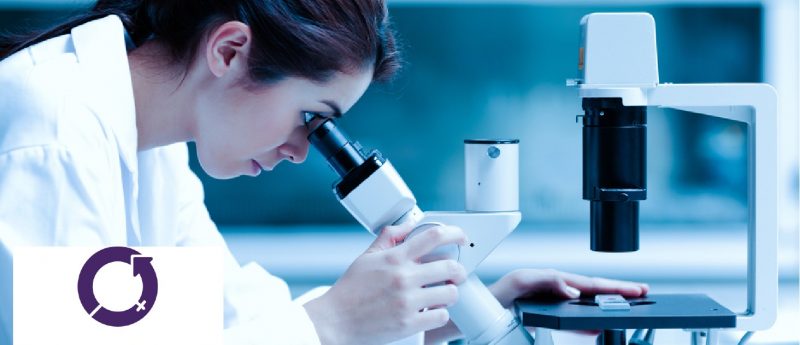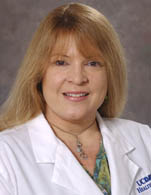Career Profile: Jan Nolta, professor and director of the Stem Cell Program at the University of California Davis

Profile of a professor working in stem cell research for Huntington’s disease
Inspired by International Women’s Day 2016, UC Davis School of Medicine’s Professor Jan Nolta will give us an insight to her day-to-day life as a woman working in stem cell research.

Dr. Nolta is the Director of the Stem Cell Program at UC Davis School of Medicine, and directs the Institute for Regenerative Cures. The UC Davis stem cell program has over 150 members collaborating to work toward stem cell-related cures for a spectrum of diseases and injuries. The current research in Dr. Nolta’s laboratory is focused on developing therapies that will use mesenchymal stem cells (MSCs) to deliver factors for treating Huntington’s disease and other disorders and injuries. Her group focuses on “bench to the bedside” research, and she has been involved in numerous clinical trials of gene and cell therapy. She is scientific director of the Good Manufacturing Practice clean room facility at UC Davis, where stem cells of different types are being isolated or expanded for clinical trials.
The basic research in the Nolta laboratory focuses on understanding the mechanisms by which genetically engineered human hematopoietic and mesenchymal stem cells can contribute to treating disease and healing injury. Following intravenous infusion, adult stem cells home to sites of tissue damage. Areas studied are cellular response to hypoxia and chemokines, cell motility, cell-to-cell interactions, and paracrine factors secreted by MSC at the site of injury.
Name and Title:
Jan Nolta, Ph.D., Professor, UC Davis
Brief biography:
I am the director of the Stem Cell Program at the University of California Davis Institute for Regenerative Cures Building, which is on the Health System/Medical Center Campus in Sacramento. I live in Sacramento with my wonderful and very tolerant husband Mark and three poodle mix “shelter dogs”; Lewis, Tony and Brian.
My alarm goes off…
At 5 AM and the first thing I do is to run downstairs to take the puppy Brian outside. Pups do not have huge bladders!
Then I do a half hour of Zumba to get the Brain Derived Neurotrophic Factor produced for the day. While working out I toss a tennis ball for the pup, while the two older dogs watch from their beds in the “fireplace room” where I work out. I have lemon water during the workout. We have a massive lemon tree in the back yard by the pool and there are fresh lemons most of the year.
After workout there is a quick shower while the coffee brews. Then I get to have about an hour and a half of uninterrupted true writing time. This is when 90% of my data processing, manuscript and grant writing gets done. My brain is fresh and I am definitely smartest in the morning. My husband is still asleep at that hour and the puppy sleeps on my legs, in the armchair (exhausted from Zumba).
It is really important to understand your own circadian rhythms, and to know when you are most creative or can be most focused. For me it is these early morning, highly coveted hours with no interruptions where I do my best writing.
Traffic in Sacramento is completely insane before 8 AM, with everyone trying to get students to school. I don’t live far from work. If I leave at 7:30, I get there at about 8:15. If I leave at 8:05, I get there at 8:15. SO, I write at home until just after 8 AM and then head in. To have my morning writing time, I try hard to not start meetings until 9. Some days we do need to have 7 or 8 AM meetings,and that is okay as well, but I do lose my morning writing hours on those days.
I take a Contigo thermos of coffee and a thermos of ice water to work each day. I drive a big black pickup truck and I listen to syrius XM “octane” which is a rock station on the way to work. Some days I carpool with our Clinical Research Director, Geralyn Annett, CLS, who is a brilliant project manager for many of our stem cell clinical trials. We debrief about the projects on the way to work.
As much as I enjoy my home life, I LOVE getting into work in the morning. I work with incredible colleagues and really smart, dedicated students and technicians, and I really look forward to seeing them each morning. My office is decorated in beach colors and I have plants, a fountain and tranquil décor. It isn’t too cluttered with papers since I do most work electronically. Everyone is welcome here.
I have two aquariums in my office and a betta fish, Bob. I feed them first thing, plug in my laptop to the docking station, then start the meetings, usually in the small conference room in our 1200 SF “shared translational lab” outside of my office in the Institute for Regenerative Cures. For individual meetings with students we are comfortable in my office.

My typical day…
From 9AM to around 5PM is a series of overlapping meetings; individual meetings with students and small and large disease team meetings. In our stem cell program we have eighteen disease teams, each working toward developing regenerative medicine therapies for patients who don’t have many other options. My own lab members work on using mesenchymal stem cells engineered to make BDNF for Huntington’s disease, MSCs engineered to make VEGF for vascular disease, and understanding cell to cell communication through tunneling nanotubules, microparticles, and exosomes.
The best part of my job…
is spending each day meeting with groups of really talented researchers, veterinarians and clinicians who are doing important work to help patients. We have eleven stem cell and regenerative medicine trials ongoing and about twenty in the pipeline. At the meetings we design the experiments, review data, write grants together by projecting them up on the board, and then design the clinical trials together as a team. No job could be better. I love it!
The worst part of my job…
Is not having enough funding or room in the lab to take all the talented students who would like to work with us. I wish we could!
In the evening…
I head home for a quick dinner and playtime with the dogs, then it is back to the computer until around midnight. I catch up on the >1,000 (seriously) emails that I get each day, post a few things on twitter, and process manuscripts for a journal where I am the editor. I never did get the hang of that “work life balance” thing so I don’t have hobbies outside of science, and I don’t ever feel cheated out of anything since I truly love what I do and I know that is it totally okay to be a “science nerd”, like I have always been.
I love twitter breaks because, if you follow the right people, it is like drinking science with a fire hose. After working for a couple of hours I do a twitter break and see what has happened in the field of stem cells that day. Perhaps my only hobby?
I always wanted to be…
A veterinarian or a human doctor, however I realized in college that I cannot give a dog OR a human a shot. Fortunately I had a great undergrad mentor who informed me that I could actually get paid for doing what I loved most- being in the research lab all day. I was a waitress all through college (during my undergrad training at Sacramento State University) and then my first science job was at the Children’s Hospital of Los Angeles with the incredible mentor Dr. Donald Kohn, who taught me a huge amount about stem cell gene therapy. Thank goodness for mentors! I got my Ph.D. in Don’s lab, at University of Southern California, and now I get to have an impact on the health of patients and pets through Regenerative Medicine, back home in northern California, at UC Davis.
Acknowledgements/Disclosure
I am one of the few scientists with no advisory boards, companies or stocks to disclose. Just science.
Further reading
Our website is: http://www.ucdmc.ucdavis.edu/stemcellresearch/
and I tweet as @Jan_Nolta